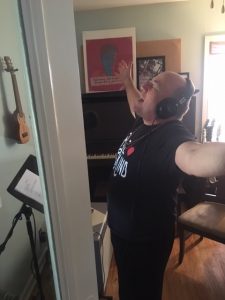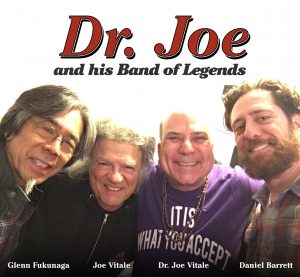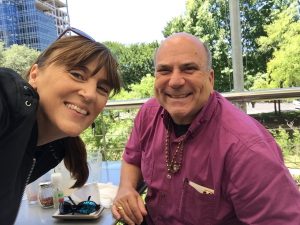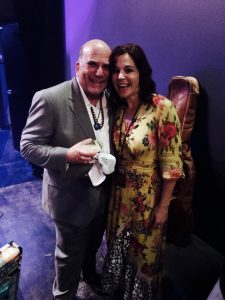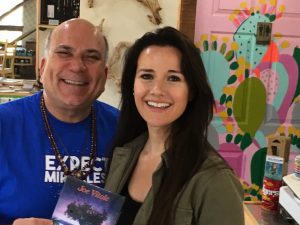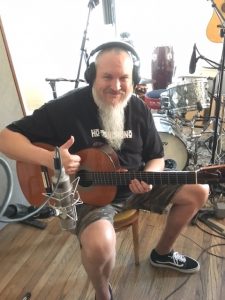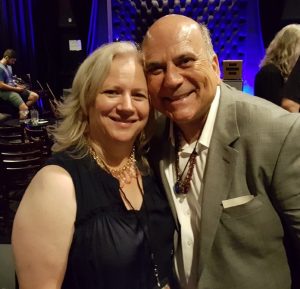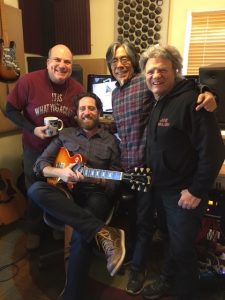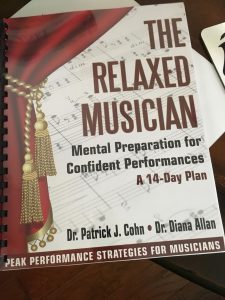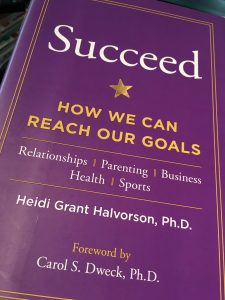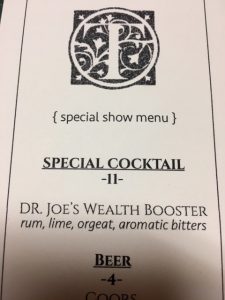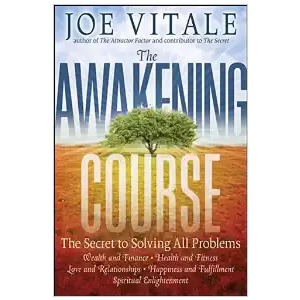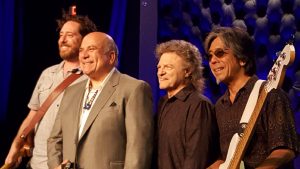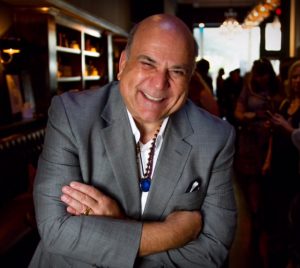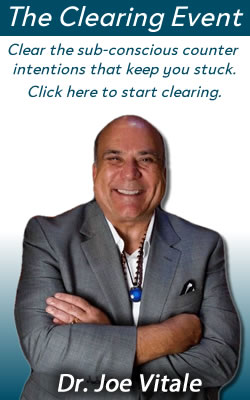Tag: anxiety
Overcoming Fear
Almost everyone is interested in overcoming fear – or should be.
Whether you want to speak in public, open a new business, talk to potential dates, do stand-up comedy, climb a mountain — or anything you haven’t done before — you’re bound to feel fear and want help in overcoming fear.
Well, how do you do it?
After recording six albums of songs, my Band of Legends politely nudged me to perform live.
While I’ve spoken on stage numerous times over the decades, I never sang on stage.
Thinking about it brought up serious fears.
Even terror.
A friend remembers me saying I would NEVER sing in public.
I had to overcome panic attacks, anxiety ambushes, and near nervous breakdowns to overcome the fear of public speaking.
But public singing?
Forget it.
I didn’t even sing in the shower.
Childhood memories of being humiliated when I tried to speak or sing stayed with me.
I overcame the speaking one.
But I refused to even touch singing.
It felt too vulnerable.
I managed to do it in the studio for my six albums, by basically managing my adrenaline, but I couldn’t accept ever singing on stage live.
No way.
But I did it.
I did it!
And it was a huge success.
I was strong and confident, owned the stage, and led my Band of Legends into a triumphant performance.
It was a historic moment.
It was a personal breakthrough.
And it will live forever in my mind as a moment of greatness for me.
So, how did I go from terrified to terrific?
I’ll share my own process, as it will illustrate the art of overcoming fear. I’m sure you can be inspired by this adventure.
I of course did all the standard things that I teach, from practicing ho’oponopono (as I wrote about in my books, Zero Limits and AT Zero) to rehearsing in the studio and in my mind.
But two months before the show, I also —
- I got coaching.
A basic rule of self-improvement is this:
You can accomplish more if you have someone who believes in you almost more than you believe in yourself.
I first saw that insight in the home of Jerry and Esther Hicks, of Abraham fame, decades ago. Jerry (who has passed on and I greatly miss) told me he first heard it in an early television western. I don’t recall the name of the show, but I do remember the impact the principle had on me.
I started Miracles Coaching more than a decade ago for that reason – to give people someone who could believe in them.
To help them overcome fear.
To help them attract miracles.
I’ve had a lot of people support me and coach me in performing:
Jen Sincero is a badass author of two NY Times bestselling books, You Are A Badass and the recent You Are A Badass at Making Money. I discovered her first book years ago, knew it would be a hit, and interviewed her. We stayed in touch.
I had lunch with Jen when she came to Austin for a book signing. I knew she had been in a band at one point, so I told her my dilemma. She told me that I had already done the hard part of singing.
“You sang for Melissa Etheridge,” she explained, referring to when I had a private songwriting lesson with the rock icon last November. “Singing one on one is harder than singing on stage, and you sang for an icon you idolize and adore.”
The last time I saw Melissa Etheridge, just for a moment after her show in San Antonio in June, she told me she loves my latest album, The Great Something.
She said to “Keep at it.”
I dedicated that album to her. There’s a song on it I wrote for her.
Her encouragement helped me stay motivated.
She once told me, “Feel the fear and do it anyway.”
Sarah McSweeney is a singer-songwriter who is on my first album, Blue Healer. She was the first person I sang for.
We met and she told me she always feels nervous before getting on stage. But she thinks of herself as a messenger, not a singer.
That reframe made the idea of singing easier.
“I am a messenger,” she said. “I focus on the song’s message.”
That insight helped me drop the idea of being a singer and adopt the idea of being a messenger. It helped me relax a little.
Meghan Sandau is a new friend. She has promoted big music events. She wanted to see me do a concert. She said she likes my music.
Her belief in me helped make me more secure.
In fact, none of this would happen without her.
She set up the event for my Band of Legends to perform.
She held my hand and encouraged me.
Meghan also suggested I do an energy clearing session with Nicole Pigeault of Los Angeles. I love energy work and do clearings for others so I leaped at the chance to hire Nicole.
Turned out to be one of the most powerful esoteric washes ever.
The hour session helped me release fears and settle into confidence.
But she wasn’t the only person to support me.
Guitar Monk Mathew Dixon has been coaching me for years now. We’ve made numerous instrumental albums together, such as Invoking Divinity.
He stayed in my corner, listening to me rehearse, listening to me confide my fears, and urging me to hang in there.
Then there’s Patrick Stark in Canada. He’s a filmmaker making a movie about overcoming fear.
It’s called “One Life: No Regrets.”
He interviewed me for it. He plans to sing on stage with the band U2. But it will be the first time he’ll sing on stage EVER.
Imagine it.
The first time you sing in public anywhere is on stage with U2 and thousands watching.
Well, if Patrick can drum up that kind of courage, then so can I.
Right?
I found preparing for the event mainly a battle with my mind. Most of my thinking was negative. It was all, What if it goes bad?
But Mindy Audlin came to visit. She teaches what if up thinking.
She wrote the book What If it All Goes Right?
She coached me in other ways to think: what if it is a breeze? What if I love it?
It also helps to see people successful in one field try their hand in a completely different field.
James Altucher tried stand-up-comedy. He’s a writer. He’s doing something out of his comfort zone.
But he’s willing to do it for the experience, and he’s sharing his learning curve to inspire others.
Though I haven’t met him, knowing he was stepping out beyond his fear fortified me to do it, too.
Of course, my beautiful Nerissa (above) believed in me, too.
She and I practiced “The Remembering Process” that Daniel Barrett taught me: we talked about the live show as if it had happened in the past and we were remembering how great it went. (See the book Daniel and I wrote: The Remembering Process.)
So the first thing I did was gather people who could coach and inspire me.
Next –
- I got educated.
To prepare for my show, I attended an online Masterclass with David Mamet, and another with Usher.
Both were astoundingly good.
Mamet is a Pulitzer prize-winning playwright and screenwriter. I think he is a genius.
He said most people are afraid to be bad to be good.
You have to be bad first to start being good.
You have to start someplace.
I reminded myself of this as I prepared for the live event.
While I wanted to step out on stage and be “perfect,” Mamet reminded me that I will probably step out and be bad.
But bad is where you start. You can’t get to great without starting at bad.
Usher said to prepare, to be confident, but to expect something to go wrong.
Don’t expect perfection.
He told a story of a performance where he injured himself at the beginning of a two-hour show, and had to keep dancing and singing despite the pain.
His insights and pointers were priceless in helping me create a mindset for success.
And I bought a set of audios called The Relaxed Musician. It’s a 14-day course in exploring limiting beliefs.
It helped me realize I had a big belief that if I looked bad as a performer, it would hurt my reputation in other areas, such as an author or speaker.
But like most beliefs, it didn’t hold up.
I could forget all my lyrics and totally wash out on stage and it wouldn’t even dent my image anywhere else. Most people forgive and forget.
In fact, a miss on stage could give me a terrific story about how I bombed and lived.
But I didn’t stop there.
I read a terrific book on how to deliver an unforgettable live performance. I liked the book so much, I read it twice.
It was called, The Musician’s Guide to a Great Live Performance.
It became my bible. I read it on planes, took it with me on my iPad, and shared it with singer-songwriter friends.
And I read a wonderful book on overcoming fear and panic, titled You 1, Anxiety 0.
Author Jodi Aman helped take the mask off of fear so I could see what it really was: an illusion. I soaked up the wisdom in this book. It really helped me.
I also read a 1950 book by Vernon Howard called Word Power.
It was about how you talk to yourself, as well as to others, effects your behavior and your results. It’s not so much affirmations but self-talk.
Pretending you are fearless by saying “I am a fearless performer” is a way to begin being a fearless performer.
And I read a recent book, called Succeed.
It explained that just visualizing success is a plan for failure unless you also visualize planning for setbacks.
In other words, thinking the show will go without a flaw is not realistic, as Usher pointed out. There is no such thing as perfection.
But visualizing success, and understanding there is work to do to get there, can almost guarantee the result you want.
That was a mind-spinning insight.
I did more, too.
- I got Nevillized.
With Meghan’s urging, I wrote out a script of how I wanted the show to go.
I focused on my feelings, not anyone else’s, so I could focus on what I could control.
The script was a type of Nevillizing (which I write about in my book, The Attractor Factor): feeling as if the event already happened, and happened the way I envisioned it.
 I didn’t visualize the show happening, I visualized that the show already happened.
I didn’t visualize the show happening, I visualized that the show already happened.
Big difference.
I wrote the script from the point of view of the next day, after I performed on stage.
I read and re-read it every day for a week before the show.
And —
- I got relaxed.
I got massages, I got plenty of rest, I drank lots of water, and I went into a flotation tank at The Zero Gravity Institute for 90 minutes the day before the show.
I was doing whatever I could to be at peak form when I stepped on stage.
I was taking care of my body and mind.
I was getting ready for my moment.
- I got faith.
Faith doesn’t always mean something religious.
Faith in yourself, faith in other people, faith in my practice and prep, faith in my Band of Legends – all of it gives a level of confidence that allows the best to surface.
As a slogan I coined says, “It is what you accept.”
I accepted that the moment would be perfect, even in any imperfections.
It would be “perfectly imperfect.”
I trusted.
And, after two months of preparing, what happened?
My Band of Legends and myself performed on July 21st at The Townsend in Austin.
I’m the luckiest musician alive to have a band of this caliber: Drummer Joe Vitale (yes, same name as mine), bass man Glenn Fukunaga and lead guitarist Daniel Barrett.
These incredible musicians encouraged me, supported me, and brought my songs to life.
We raised the roof and tore down the walls.
We shook the earth and wowed the crowd.
Talk about overcoming fear!!!
I gave everything I had in me, delivering my messages with energy, enthusiasm, electricity, and a sense of fearlessness and fun.
At the end of our set, we got a standing ovation.
A standing ovation!
I did it.
And I loved it!
Now, what do you fear that is time for you to do?
Isn’t today a good day to begin overcoming fear?
Ao Akua
Resources:
http://www.TheBandofLegends.com
http://www.AllHealingMusic.com
http://www.MiraclesCoaching.com
http://www.quantumradiance.com
Inside an Isolation Float Tank
What I Learned in an Isolation Float Tank
Or, Shut Up Already!
I just completed my second isolation float tank experience.
In case you don’t know, an isolation float tank is a sensory deprivation tank.
You get in this big enclosed humid room, lay nude on ten inches or so of warm salt-saturated water, bubble up to the top like a wine cork, watch the lights and sound go out and just, well, float.
No music.
No light.
Nobody else there.
You’re entirely alone.
Just you and your thoughts.
Not even a cell phone.
For ninety minutes.
So, why would anyone want to do that?
Exactly.
That’s why I didn’t do it.
I had a gift coupon to have an isolation tank experience at The Zero Gravity Institute in Austin, and never used it.
Not for five years.
I lost it.
Or hid it.
I didn’t care, either, as I couldn’t imagine “relaxing” in a dark room with no stimulation but my breathing, my thoughts, and the warm water under my butt. It sounded like an MRI tube and I hated those.
But after five years of avoiding my complimentary tank experience, I was given yet another gift coupon to have one, this time from my wife.
I figured the Universe (or my wife) was trying to tell me something, so I called The Zero Gravity Institute and booked my first session.
The institute is clinically clean, well kept, and futuristic looking.
I didn’t know what to expect, but I knew isolation tanks had been around for decades, stood the test of time, and that friends I trust, such as the publisher of Austin All Natural magazine, regularly did “the tank.”
So, what did I have to lose?
After a relaxing massage, and a quick shower, I was led to the tank.
I was surprised to see it large and spacious. You could stand and walk around in it.
It was like an enclosed hot tub.
Or a covered shallow swimming pool.
When I opened the large door, I felt the humid air and smelled the Epsom salts.
A soft light and gentle music were all I could sense.
I got in.
I lay back on the thick water and felt myself rise to the top of it, like an inflated big balloon.
Or a duck.
The lights dimmed to black.
The music softened to silence.
I lay there, with little stimulation, thinking, “This is different.”
And then all hell broke loose.
My mind was driving me up the sides of the tank.
It kept going into fear, wondering if I was safe, could I get out, what if I die in here, what if I go mad, and so forth.
I desperately reached for the inside door handle several times, wanting to assure myself that I could find it.
I occasionally reached down and pushed through the thick salt water to touch the floor, wanting to be sure I could stand and move if I had to.
I sometimes panicked in the dark, floundered about to get a sense of direction, splashed burning salt water in my eyes, and reached for the walls to be sure I could touch one.
This went on for at least 30 minutes.
I hated it.
I told my mind, “Shut up, already!”
I remember thinking, “I’ll never last 90 minutes in here! This is hell!”
I started imagining what I would say to the receptionist if I got out early.
“Sorry. Stomach upset.”
“Sorry. Forgot I had a call with Oprah.”
“Sorry. I thought this was for a haircut.”
But I let my monkey mind chatter and I kept breathing.
And then something happened.
Or maybe nothing happened.
The lights started to slowly come up.
The music started to play and gently grow louder.
Somehow “I” had left and the 90 minutes had passed.
And I was euphoric.
My brain was dancing with fireworks of delight.
I felt completely relaxed, and my body felt washed; as if it had been cleansed both inside and out.
I got out, showered off, got dressed, and felt giddy.
Now this is cool, I thought.
In the reception area, I was smiling.
I couldn’t stop smiling.
The owner told me I just detoxed my body and my mind. Endorphins were playing. I had gone into an alpha “non-mind” state of rejuvenation and relaxation. She added that I would feel the effects for a good week or more after this session.
She was right.
I slept better, had more energy, was more optimistic and relaxed, and accomplished even more tasks during each day than I normally would, and I’m already a pretty prolific and productive guy.
Afterwards I talked to a few people who had also experienced the tank.
They all had battles with their mind the first time.
They all realized that the monkey mind had to chatter and bite for thirty minutes before it would go on vacation and allow a deeper relaxation to occur.
So I wasn’t a wuss, after all.
I liked the first session so much, I booked a second.
The second was easier.
I already knew I’d be safe, so I didn’t flounder, reach for the door, or panic.
The “fight or flight” response was gone.
I just breathed, relaxed, and observed my mind.
My mind.
When it’s just you and your breathing in an isolation float tank, your mind becomes the loudest voice in the room.
It can also be the most negative, belligerent and irritating voice.
My two tank experiences taught me what I already knew but needed to really feel: our minds are keeping us in fear all the time.
Not only in an isolation float tank.
All.
The.
Time.
It doesn’t want you to take risks or do anything unusual because you might get hurt. Even when it’s obvious that you won’t get hurt, the mind still keeps talking.
Your mind is talking right now, passing judgment on me and this article, warning you not to get in an isolation tank (or do anything out of your comfort zone).
Your mind is doing its job in keeping you safe, but it’s also, ironically, performing over kill.
You don’t need to be that safe.
While in the tank, I’ve learned to more closely observe and detach from my mind.
Sometimes I herd my thoughts like cats and nudge them into focusing on my goals for the week. That’s constructive use of my alone time. I call it The Intentional Tank Manifestation.
If my mind is going to talk, I might as well give it a task.
But at a certain point, about thirty minutes into my tank experience, “I” let go and simply unplug.
And that’s where the magic happens.
With my mind “off line,” my body can release, my unconscious can process, and I can remain open to inspiration and relaxation.
Again, when the lights came back up and music came back on, I was surprised that 90 minutes had passed.
Dressed and relaxed, the receptionist asked me how it was.
“It’s hard to explain,” I said. “I know I wasn’t thinking in there for ninety minutes, but I don’t know what I was doing if I wasn’t thinking in there.”
“You lay in there and think?”
“I lay in there and think I am thinking,” I replied. “But in reality, I have no idea what happens in there.”
Because I had no idea, I did a little research.
Turns out neuroscientist John Lilly invented sensory deprivation tanks in the 1950s. He and others discovered that complete isolation in a safe place triggered a relaxation even deeper than sleep.
The Zero Gravity Institute site explains it this way:
“The sudden lack of stimulation to large areas of the nervous system triggers a spontaneous chain reaction throughout the body known as the parasympathetic response. Muscle tension, blood pressure, heart rate and oxygen consumption all drop dramatically. The entire chemistry of the body changes. The parasympathetic response is the body’s natural mechanism for healing and regeneration. “
Tank results prove erased anxiety and fear, and multiplied confidence and healing.
Most people experience profound relaxation, release of physical and emotional stress, and more.
Creativity increases, moods are brighter, and spirituality is alive.
People use tank experiences for ADHD, PTSD, addictions, depression, pain, recovery, spiritual exploration, athletic performance, improved sleep, high blood pressure and, well, the list keeps going.
It might grow hair, too. (Or not.)
The Zero Gravity Institute’s site also says-
“The endorphins released while floating create intense feelings of well-being, alleviating fatigue and chronic pain, as well as improving many of the higher brain functions such as memory and learning. The body’s endorphin level is what makes some people naturally happy and others less so. Happiness is not an illusion – it is an endorphin.”
After my second float, I drove home, turned on my computer, and wrote virtually all of this article in one sitting. I usually rewrite fifty times. Or more.
My next morning’s weight lifting workout was a record-breaker. I was unbelievably strong and energetic.
And an interview I did right after it was one of the best in my life; I was calm, articulate, and inspired.
I’m booking a third float right now. I’ll make “floating away” part of my self-care, along with massages, good books, music, exercise, healthy food and purring cats.
Ao Akua
Joe

